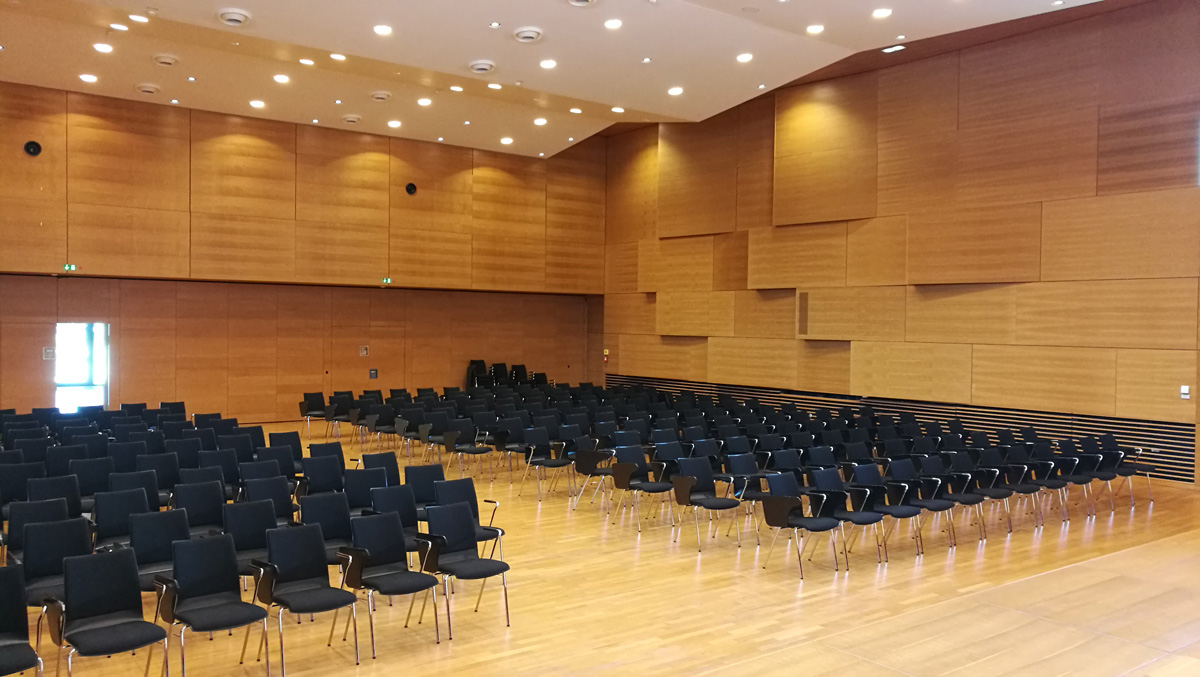Rhetoric as the art of communication
Can you learn to speak in a way that enables you reach your audience persuasively? Since antiquity, rhetoric has dealt with this question in theory and practice. Today we might call this "communicative competence".
Everyone knows how to talk. But when you examine the process of speech more closely, you are faced with a very complex phenomenon. Things like your immediate objectives or the venue of your speech (is it a stress situation or are you playing to a crowd you know?) influence how tools of communication – meaning body, voice, emotions – work. This is exactly what speech education focuses on. Since the interaction of these factors usually takes place on some unconscious level, it's important to learn to utilize them. The better you can coordinate the elements internally (combining, for example, what you intend, the modulations of your voice, your feelings), the easier it becomes to externalize your message. For that reason, I think of communication as a two-pronged procedure: internally you deal with the process and techniques of speech, and externally you are focused on your listeners. The former is a fascinating educational project, the latter a central goal.

Who will be sitting there? Imagine your audience and the venue while rehearsing your speech...
(Lecture hall at the University of Regensburg "Vielbertgebäude". Photo: Wieland Kranich)
Speech as a performance
Speaking in public or in job-related situations is a performance. Often behind what seems to be a casual presentation where things like eloquence and articulation don't appear to matter, the very same focus on special effects is covertly at work as in precise rhetorical preparations. These are the extremes of verbal communication, and between them there is a wide field of options. All of this can be described as rhetorical execution, and its enormous significance becomes clear when you consider what communication theorists have to say on the subject: "Assumptions that a person is in possession of the necessary competence [for a task] are primarily drawn from that person's speech-performance." That is what motivates a person to discover the latitudes available for individual development.
Speech as a creative process
Rhetorical creativity has to do with what you have to say as well as how you execute what you say. What you have to say demands the purposeful and skillful construction of arguments and information as well as the ability to formulate these imaginatively and appropriately. Executing creative expression involves a natural and versatile calibration of body language and likewise the capability to react according to a situation – for example, when to pause or change strategies or when to improvise. Finally, the sensible use of emotional tools (empathy, indignation, joy) and a knowledge of their impact are essential elements for successful communication.
Literature
Funken, Christiane, Stoll, Alexander, Hörlin, Sinje: Die Projektdarsteller: Karriere als Inszenierung.
Paradoxien und Geschlechterfallen in der Wissensökonomie. Berlin 2011.
Knape, Joachim: Allgemeine Rhetorik. Stuttgart 2015.
Knape, Joachim, Litschko, Achim (Hrsg.): Kreativität. Kommunikation – Wissenschaft – Künste. Neue Rhetorik 6. Berlin 2013.
Schirren, Thomas: Grundlagenartikel zur Rhetorik in: Ulla Fix, A. Gardt: Handbuch zur Sprach- und Kommunikationswissenschaft 31.1. Berlin, New York 2008.
http://www.rheton.sbg.ac.at/rheton/2018/06/grundlagenartikel-zur-rhetorik-von-thomas-schirren
Funken: 2011 pp. 177-178.
For further information on my framework of rhetorical practice please continue reading